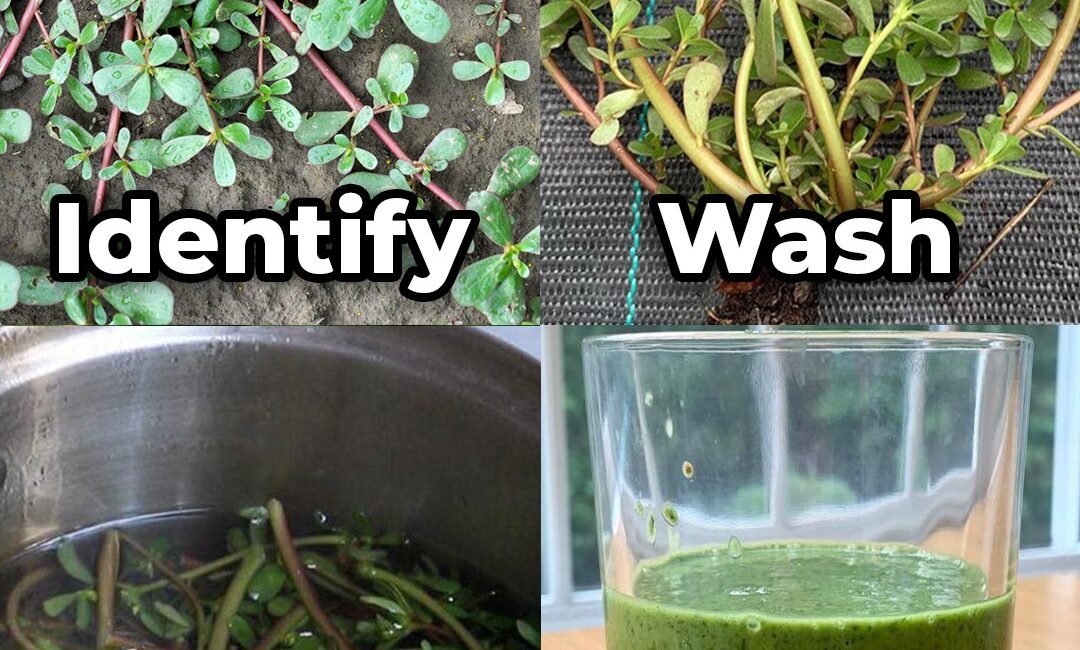You’ve likely seen it growing wild along sidewalks, garden beds, or even in cracks in your driveway. That low-lying, succulent weed is purslane (Portulaca oleracea), often dismissed as a nuisance or “just a weed.” But don’t be fooled—this common plant is a nutritional powerhouse and an ancient medicinal herb revered in cultures worldwide. From its rich omega-3 fatty acids to its potent antioxidants and essential vitamins, purslane is a natural superfood you might be overlooking.
In this extensive article, we’ll dive deep into the nutritional composition of purslane, its scientifically supported health benefits, culinary versatility, potential risks, and practical ways to incorporate this ‘garden gold’ into your daily routine. If you’re searching for a natural way to boost your health with minimal effort, purslane may just be your next best discovery.
What Is Purslane? An Introduction
Purslane, scientifically known as Portulaca oleracea, is a hardy, succulent annual plant found across temperate and tropical regions worldwide. It thrives in gardens, lawns, roadside cracks, and fields, often spreading rapidly due to its robust nature. Purslane has smooth, reddish stems, fleshy leaves, and small yellow flowers. Traditionally, many cultures have harvested it as an edible green long before it earned its “weed” status in modern horticulture.
Historically, purslane has been consumed in the Mediterranean, Middle East, Asia, and North Africa. It’s praised not only for its tangy, slightly sour flavor but also for its impressive nutrient profile and medicinal qualities. Now, it’s gaining renewed interest from nutritionists, herbalists, and health enthusiasts for its array of health-promoting properties.
Nutritional Profile of Purslane: A Superfood in Disguise
Purslane’s nutritional density is what truly sets it apart from many leafy greens. Here’s a detailed breakdown of what makes this plant a goldmine for your health:
1. Rich in Omega-3 Fatty Acids
Purslane is one of the rare plants that contain significant amounts of alpha-linolenic acid (ALA), a plant-based omega-3 fatty acid. Omega-3s are essential fats that support heart health, brain function, and reduce inflammation. Most plant foods are deficient in omega-3s, so purslane’s high content makes it invaluable—especially for vegetarians and vegans.
2. Loaded with Antioxidants
This weed contains a variety of antioxidants, including vitamins A, C, and E, as well as glutathione, betalain pigments, and flavonoids. These antioxidants neutralize harmful free radicals, reduce oxidative stress, and protect your cells from damage, thereby lowering the risk of chronic diseases such as cancer and cardiovascular disorders.
3. Excellent Source of Vitamins and Minerals
- Vitamin A (in the form of beta-carotene): Crucial for eye health, skin integrity, and immune function.
- Vitamin C: Boosts immunity, promotes collagen production, and enhances iron absorption.
- Magnesium: Vital for muscle function, nerve transmission, and bone health.
- Potassium: Supports heart health and maintains healthy blood pressure.
- Calcium: Needed for strong bones and teeth.
- Iron: Supports oxygen transport in the blood, preventing anemia.
4. High in Dietary Fiber
Purslane contains soluble and insoluble fiber, which aids digestion, regulates blood sugar levels, and promotes satiety—making it a valuable food for weight management and metabolic health.
5. Low in Calories and Carbohydrates
With minimal calories and carbs, purslane is perfect for anyone aiming to lose weight or maintain healthy blood sugar.
How Purslane Benefits Your Body: Transformative Health Effects
Incorporating purslane into your diet can lead to multiple health improvements, many of which are backed by scientific research:
1. Cardiovascular Health Enhancement
Thanks to its omega-3 fatty acids, potassium, and antioxidants, purslane helps improve heart health by:
- Reducing inflammation and oxidative damage to blood vessels.
- Lowering LDL (bad) cholesterol and triglycerides.
- Regulating blood pressure through its potassium content.
- Improving endothelial function (the lining of blood vessels).
Studies show that diets rich in omega-3s can reduce the risk of heart attacks, strokes, and other cardiovascular events. Purslane, as a natural and affordable source, provides these benefits conveniently.
2. Anti-inflammatory and Pain-Relief Properties
Purslane contains bioactive compounds that inhibit inflammatory pathways. This makes it beneficial for chronic inflammatory conditions such as arthritis, asthma, and inflammatory bowel disease (IBD). Regular consumption may reduce joint pain, swelling, and overall inflammation.
3. Antioxidant Protection and Cancer Prevention
The antioxidants in purslane scavenge harmful free radicals, which contribute to DNA damage and cancer development. Laboratory studies suggest that purslane extracts can suppress the growth of certain cancer cells and protect healthy cells from oxidative damage.
4. Blood Sugar Regulation and Diabetes Management
Purslane’s fiber content and antioxidant profile help stabilize blood sugar levels. Some research indicates that purslane may improve insulin sensitivity and reduce blood glucose spikes, making it a valuable food for people with type 2 diabetes or prediabetes.
5. Digestive Health and Gut Microbiome Support
The high fiber content aids bowel regularity and fosters a healthy gut microbiome, essential for optimal digestion and immunity. Purslane’s mucilaginous (gel-like) texture soothes the gastrointestinal tract and may alleviate symptoms of ulcers and acid reflux.
Click page 2 for more




